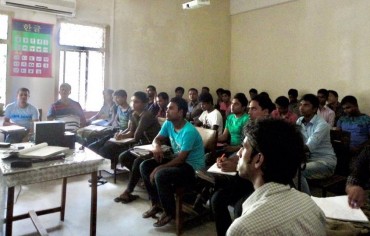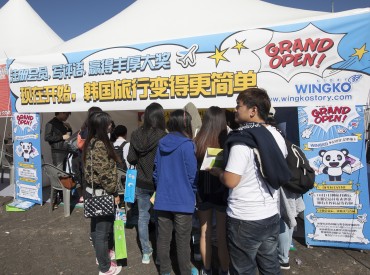SEOUL, July 14 (Korea Bizwire) – South Korea is a food lover’s paradise. And there are a wide range of delicious dishes in every corner of the country to suit every taste as its people enjoy various culinary delights anytime, anywhere.
Among other things, South Korea has a wide variety of noodles on offer, including ramyun (or ramen as widely called among the Japanese), udon, naengmyeon (a cold noodle soup usually served with ice), jajangmyeon (black bean sauce noodle dish), jjamppong (spicy seafood noodles), jjolmyeon (chewy wheat noodles), kalguksu (chopped noodles) – the list is endless.
Many Koreans are not satisfied with just one choice among these various dishes, so it is no wonder that there has been creativity in savoring a variety of tastes simultaneously, such as chapaguri or ram-don, featured in Bong Joon Ho’s Oscar-winning movie Parasite.
But when it comes to choosing one’s favorite instant noodles, this country full of gourmets has shown an unwavering affection for ramyun; its affordability, quickness, and replaceability for any nutritious food, ramyun is by far the most popular simple meal among Koreans.
According to the World Instant Noodles Association, South Korea ranked sixth in ramyun (ramen) consumption volume last year with 3.9 billion servings. And WINA counted 106.4 billion servings eaten worldwide in 2019.
South Korea is also stepping up exports of its unique ramyun flavors to the world. NongShim, a food company famous for its Shin Ramyun noodles, announced yesterday sales for its U.S. subsidiary in the first half of this year jumped 35 percent to reach an all-time high of $164 million.
With demand for simple meal surging, largely driven by the shift in eating pattern among many Americans, NongShim has touted its sales in the American market as “outstanding.” In addition, as the COVID-19 pandemic drags on, a growing number of Americans have opted for ramyun as an alternative when choosing essential emergency food.
The popularity of South Korean instant noodles is surging overseas, in line with the popularity of Korean food – sometimes dubbed K-food – the world over. According to data from the Korea Trade Statistics Promotion Institute, Korea shipped out $413 million worth ramyun in 2018, up 8.4 percent from a year earlier.
The Nikkei Asian Review introduced the new-found popularity of a uniquely Korean spicy flavored quick dish, saying, “fueled by a viral online spicy noodle challenge and K-pop stars, South Korean food is gaining traction worldwide.”
The New York Times also gave rave reviews to South Korean instant noodles last month. In an article titled “The Best Instant Noodles, According to Chefs, Cookbook Authors, and Ramen Fanatics,” the writer Anna Perling chose NongShim Shin Black Noodle Soup as the best product among many varieties, saying she couldn’t stop eating them.
Among the 11 instant noodle products the NYT reporter recommended in the article, NongShim’s instant noodle products – including Chapaggetti and Neoguri – accounted for around half of the list.
According to NongShim, sales of its branded instant noodles increased at several retailers including Wal-Mart, Costco, Kroger and Sam’s Club. And sales of NongShim ramyun at Walmart and Costco rose 35 percent and 51 percent, respectively, in the first half of the year. Sales via online channels were good as well, with the company’s sales on Amazon surging by 79 percent.

NongShim, a food company famous for its Shin Ramyun noodles, announced yesterday sales for its U.S. subsidiary in the first half of this year jumped 35 percent to reach an all-time high of $164 million. (Image courtesy of NongShim)
Sure, there are many Korean food products jockeying for position in the international market. Buldak Ramen, Samyang Foods’ hot spicy noodles went viral through the Fire Noodle Challenge on the Internet. The phenomenal success of the event lead to a total of 30 Buldak Ramen eating contests in five countries, including China, Thailand and Malaysia.
Mandu, uniquely Korean styled dumplings, made famous in marketing campaigns by CJ CheilJedang in the U.S., have seen a surge in popularity, coupled with rising demand for emergency food due to the COVID-19 pandemic.
NongShim’s best-selling brand ‘Shin’ means literally ‘hot spicy.’ Intriguingly enough, experts in etymology say this Chinese character ‘Shin’ originates from ‘a large nail in punishment of a prisoner’.
The punishment using a large nail is bound to be excruciating, that is why this character means ‘spicy hot’. Maybe this is some reason why ramen is very valuable in prisons when used in a trade and barter market.
Whatever reasons behind the growing popularity of instant noodles over the world, the newfound love for Korean ramyun is unlikely to dissipate anytime soon.

The popularity of South Korean instant noodles is surging overseas, in line with the popularity of Korean food – sometimes dubbed K-food – the world over. According to data from the Korea Trade Statistics Promotion Institute, Korea shipped out $413 million worth ramyun in 2018, up 8.4 percent from a year earlier. (Image courtesy of NongShim)
Jerry M. Kim (jerry@koreabizwire.com)






